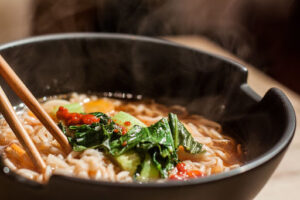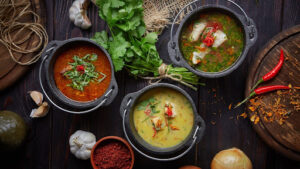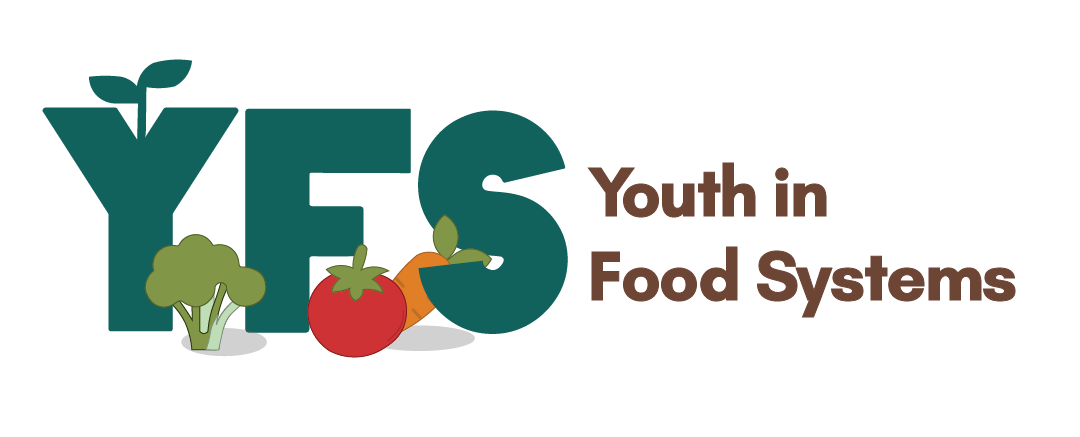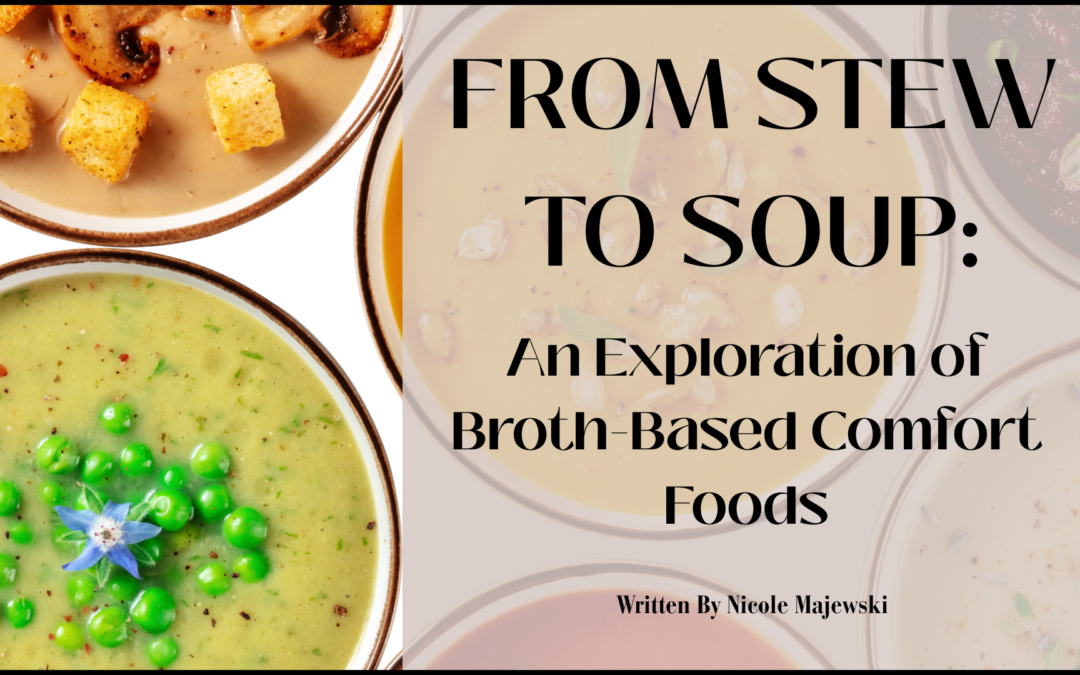Written by: Nicole Majewski
Edited by: Andrew Jackson
Designed by: Serena Sclippa
Published by: Eleanor Jeavons

Whether you love it or hate it, soup is undeniably one of the most iconic comfort foods. It can come in any variety for any occasion, and, better yet, their related stews come together to form a broader family of broth-derived foods with so much variety that makes it hard to know where to start! Luckily, we’ve got you covered. This article will go through a summary of the different broths you can choose from. But first, you might be wondering;
What’s the difference between soup and stew?

According to Dictionary.com, soup is a dish that is “primarily liquid-based”, whereas stews are “thicker and chunkier”. The main difference between these two is the ratio of solid ingredients to liquid; soups typically have fewer solids, sometimes even none at all, whereas stews are mostly made up of them with the broth simply bringing it all together. That isn’t to say that thick soups or watery stews don’t exist, but this rule of thumb can generally distinguish between them. So, now that you’re a definitions pro, you’re ready to explore;
Categories of Soup
Soups fall into two main categories; clear or thick. Clear soups are light, and typically serve as appetizers. Thicker soups are more dense—often due to having cream as a base—and are designed as filling and full meals. Examples include bisques and chowders, known for their rich qualities.
Additionally, while not officially their own category, many soups fall under the category of medicinal soups. These are designed to provide nutrition to promote health or recovery. Examples include bone broth—designed to boost immune system health—and chicken soup, often used as a household remedy for the common cold.
Types of Soup
Soups are infinitely versatile in their usage and how they’re cooked—whether it be braised, slow-cooked, boiled, or a million other techniques—but the thing that tends to define a soup is its primary ingredient.
1. Vegetable Soups
Vegetable soups are defined by their use of fresh or cooked vegetables, leafy greens, or herbs. These soups are often light, vibrant, and full of vitamins. Some of the most popular examples include tomato soup, minestrone, roasted sweet potato soup, dried mushroom soup, and squash soup.
2. Meat Soups
These protein-packed soups are often based on chicken, beef, or lamb, but thousands of other options exist—like pork-and-noodle soup or meatball soup, just to name a few.
3. Noodle Soups
While many soups—regardless of their meat contents or lack thereof—contain noodles, they aren’t just an accessory to the broth itself. There are many varieties that are exclusively based around the many noddle options they include; whether it be egg noodles, wheat noodles, rice noodles, glass noodles, ramen noodles, udon, ramyeon, thin noodles, spaghetti, tiny pasta, buckwheat soba noodles, rice vermicelli noodles, or any of the other countless choices! One of the most famous examples is Chinese noodle soup.
4. Seafood soups
The possibilities for seafood soup are as vast as the ocean itself. Whether the star is fish, lobster, crabs, or clams, seafood soups offer a distinct palette, specific to their region of origin. Some notable examples include Mexican seafood soup and bouillabaisse.
5. Grain soups
Grain-based soups feature ingredients like rice, barley, oats, or wheat as their primary component. These soups tend to be filling and often have a slightly thicker consistency, like in barley soup and oatmeal soup.
Categories of Stew
Most stews fall under one of two categories—braised or white. Braised stews have a lower liquid content, instead being mostly made up of large pieces of meat. Braised stews are defined by their creamy texture and uniform pieces of small ingredients.
Types of Stew
Apart from the main types paralleling their soup cousins—like vegetable, meat, or seafood stews—, there are some special extra categories for stews, partly because their denser nature allows a larger range of ingredients to be compacted into a more distinct recipe!
1. Legume stews
Yes, there is a difference between vegetable stews and legume stews! Legume stews are packed with beans, peas or lentils, like in Cuban black bean stew, Rajma, Ethiopian Misir Wot, Ful Medames, and Loubia.
2. Curry stews
Their name might be confusing at first, but it’s actually quite simple. Curry stews are simply curries that are too thick to be classified as curries, so, here they are! Examples include Jamaican curry goat, Ethiopian doro wat, Goan pork vindaloo, South Indian Chettinad curry, and Thai Massaman curry. Again, don’t let their names throw you off. Try making these stews for yourself to verify they’re really stews!
3. Wine-based
While these stews definitely aren’t just wine in a bowl, many iconic variants, like coq au vin, are defined by their iconic addition of (most often red) wine. This infusion during the cooking process adds a deep flavour to the broth.
4. Coconut milk-based
Coconut milk adds a sweet, creamy flavor that can transform a stew into something completely unique. Examples include Thai green curry, Tanzanian fish coconut stew, Trinidadian coconut fish stew, and Dominican pescado con coco.
Canadian Broths?
You’ve learned how to categorise and subcategorise soup, so it’s only fair to end off this article by exploring some classic Canada-originating recipes. The Quebec-originating Soupe aux pois is made from yellow split peas and pork. Moose stew, common in Indigenous communities, is made with moose meat and root vegetables. Pork hock stew is made from spiced pork and meatballs. And of course, we can’t forget the famous Three Sisters Soup, a traditional Indigenous recipe made from corn, beans, and squash.
Now, try making your own!
Whether you prefer a light vegetable soup to start your meal or a comforting stew to enjoy as a main course, there’s a broth-based dish for everyone. Now that you understand the key differences between these dishes and all they have to offer, why not try making your own soup or stew at home? Who knows—you might even create a whole new recipe by combining your favorite ingredients from both worlds! Happy soup cooking!
References
https://www.dictionary.com/e/stew-vs-soup/
https://www.foodnetwork.com/recipes/photos/vegetarian-soup
https://www.foodandwine.com/meat-soups-7497067
Images Used
https://www.flickr.com/photos/sackton/8168306125
https://www.goodfon.com/food/wallpaper-borshch-sup-perets-petrushka-assorti.html

